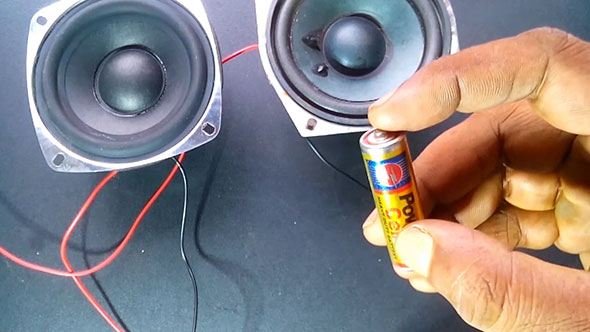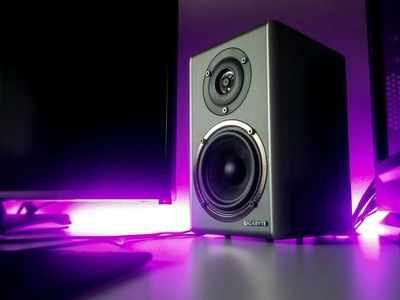Professional speaker installation puts the polarity of speaker wires into consideration. This makes it easier for professionals to connect the amplifier to the speaker. He/she simply connects the positive terminal to the corresponding positive terminal and does the same thing with the negative terminal. However, wires may not be properly labeled, thereby increasing the risk of wiring a car backward. When the negative is connected to the positive terminal or vice versa, the speaker is therefore connected backward. Can you wire a car speaker backward, and if so, does it damage the car speaker or other components of your car’s electrical circuit, or does it affect sound quality? If you’re new to car electronics and would like to find out the answers to these questions before connecting your car speaker, make sure you follow this article to the latter.
Sound quality remains the same when a speaker is wired backward because the positive and negative pressure sequences are still created, notwithstanding the change in wiring. Positive to positive and negative to negative speaker connections equals correct polarity while negative to positive and vice versa equals reverse polarity. Correct polarity ensures correct speaker positioning which begins from 0, pushes backward to -1 (negative) and forward (+1). Reverse polarity, on the other hand, causes your speaker to move in the opposite directions. For example, when the speaker is meant to move backward, it moves forward because of the reverse polarity. But what exactly does this mean?
While it’s recommended to wire your speakers correctly, unlabeled wires can cause a bit of confusion, especially for amateur electricians looking to wire their car speakers. But do you know you can figure out the correct wire connections with a speaker and a battery? Keep reading to find out more.
Table of Contents
What Is Speaker Polarity
According to sound engineering, speaker polarity is the result of the wire connections between the speakers and amplifiers. Correct speaker polarity is achieved when the positive terminal of the speaker is connected to the positive terminal of the amplifier.
While several motorists get speaker polarity wrong, most installations are correct because the wires are correctly labeled. The positive wire is labeled positive or has a (+) sign while the negative wire has the (-) sign.
On the other hand, reverse speaker polarity happens when the positive speaker terminal is connected to the negative amplifier terminal and vice versa.
How speakers work
Speakers create positive and negative movements by vibrating in both directions which produces sound from the speaker to our ears. This process is repeated every time by displacing air particles in the surrounding environment.
What Happens If You Wire Your Speaker Backward
Wiring speakers backward is one of the most common speakers installation errors. However, it has never caused any major damage to the speaker or the amplifier but reduces proper power delivery and speaker response.
To ensure proper or correct polarity, connect the speaker’s wires (negative and positive) to a battery. If the speaker cone retracts inward, then it’s connected backward, but if it pushes outward, then it’s correctly polarized.
According to experts, a single reverse speaker polarity wouldn’t matter much unless when amid a series of properly polarized speakers. The reverse speaker would work against the other speakers. Nonetheless, professional sound engineers use this trick to enhance certain qualities of sound production.
Speaker polarity and bass
Reversing polarity produces a thin sound from a reduction in the lower frequencies. Since bass tones are produced in phases by the pressure generated from the sequence of movements of the speaker cones, a change in direction causes bass notes to become inaudible.
While this may not be a general problem, motorists who love to listen to bass notes would witness reduced in-car audio quality. For good bass audio quality, motorists should always ensure correct polarity.
Speaker Polarity and Sound Quality
Although preferable, correct speaker polarity barely affects the quality of sound your speaker produces. Sound quality is only affected in several situations but generally, you’re free to make a mistake with wiring. However, speaker polarity may have adverse effects on already damaged speakers and amplifiers.
To ensure correct polarity and enjoy high-quality sound and peace of mind, we recommend hiring a professional or following the instructions on the manufacturer’s guide.
Incorrect Speaker Polarity And Speaker Damage
While reverse wire polarity may cause reduced audio quality, it has no effects on speakers and amplifiers because the voltages supplied remain the same with correct speaker polarity.
How To Connect Speaker Wires
There are different ways of connecting speakers to amplifiers using wires. The first method is fairly simple. Simply connect the labeled positive (+) wire to the positive terminal of the amplifier and the negative (-) to the negative terminal. The positive terminal is usually red while the negative is black. Usually red while the negative is black.
Common Car Stereo Problems And Solutions
Are you experiencing car stereo problems and can’t pinpoint the source? Browse through these common car stereo problems to discover what may be happening to your stereo and how to solve them.
Amplifiers
A major stereo problem faced by many motorists is unresponsive amplifiers. This can be frustrating as amplifiers are important for enhancing in-car audio and improving audio quality. As mentioned earlier, reverse wiring doesn’t affect the power of either amplifier and speaker.
So don’t waste your time achieving the speaker’s polarity. And don’t hurry to get a replacement amplifier as the problem might be minor and can be easily fixed without much financial investment.
The most common culprit is improper grounding. Check that it’s properly grounded to a rust-free metal chassis. Make sure the connection is tight and clean the area from time to time to remove rust.
Check the power to make sure it is properly connected to the amplifier. Also, make sure the amplifier is receiving the correct voltage by checking the amps on the cable.
If it still doesn’t power on, then unscrew the amplifier using a screwdriver to check for damaged components within the amp. Replace worn-out or blown parts with new certified parts.
Properly functional amplifiers might also fail to come on by going into protection mode. As the name goes, this mode is for protecting the amplifier and speaker. This might be a result of low impedance caused by maximizing the volume or improper wiring.
Another reason why your amplifier might enter protection mode is due to overheating. Overheating causes amplifiers to shut down. Overheating is caused by several issues including, poor ventilation, low speaker impedance, high gain, and blown-out speakers.
Always make sure your amplifiers have proper ventilation. You can install additional fans by the amplifier if it’s located in an airtight area.
Speakers
Ever turned on your stereo system and played your favorite song, only to be greeted with a complete hush from your speakers. Diagnosing the problem can be difficult as it can be caused by several issues.
But common culprits include the speaker cable connections and damaged speaker components. Check that all the wires are properly connected to the right source.
Start from the power cable before advancing to the connections between the amplifier and speakers. Use the correct speaker wires to prevent damages to the speaker components to ensure longevity.
Are you hearing a buzzing noise from your speakers? This is also caused by several issues. Before applying any verified solutions, we recommend testing the speakers with different songs or radio frequencies to pinpoint the source of the distortion.
If that’s not the case, then check the grounding. Ground each device separately to prevent shared connections.
Can’t hear the bass from your new speakers? Then check that the amplifier is powerful enough to power the speakers. Make sure the wires are properly connected. Test your speakers with a new and powerful amplifier to enhance the bass.




